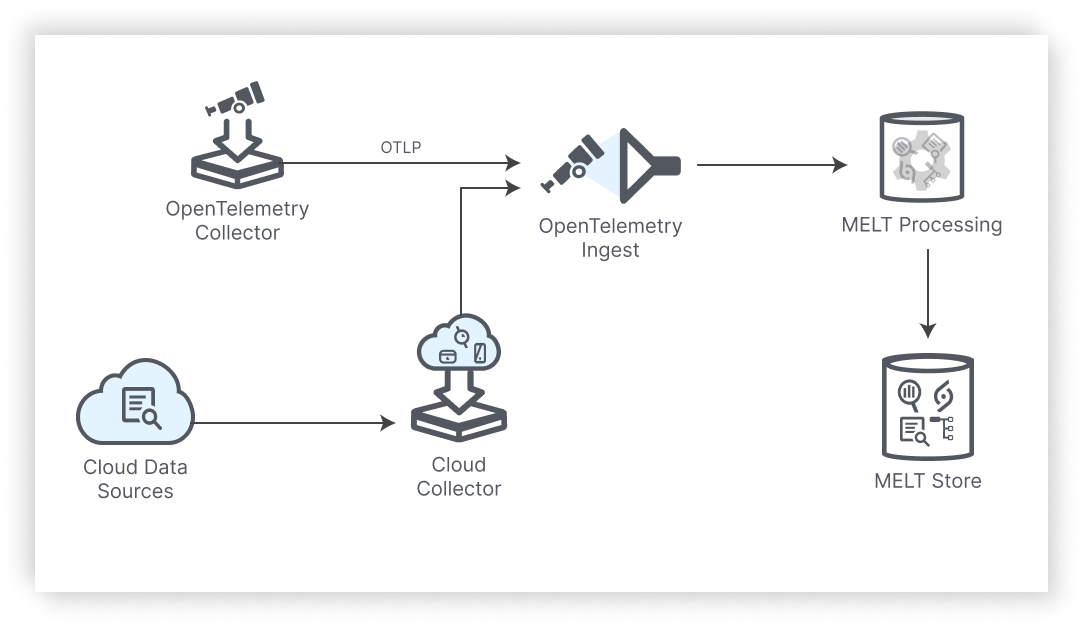This documentation and the Cisco Observability Platform functionalities it describes are subject to change. Data saved on the platform may disappear and APIs may change without notice.
Introduction
The Cisco Observability Platform ingests metric, event, log, and trace (MELT) data in OpenTelemetry™ Line Protocol (OTLP) format. This data comes from Tenants' applications and from their cloud and infrastructure environments. In other words, Tenants configure their applications or environments to send OTLP packets to the Cisco Observability Platform's OpenTelemetry Ingest from OpenTelemetry-compatible collectors, custom collectors, or directly from REST endpoints.

From OpenTelemetry Ingest, all OTLP packets are routed through MELT Processing. This processing includes a resource mapping stage which maps the OTLP packet's metadata (also called resource map or resource block) to entities and the attributes within them, according to the MELT processing rules declared by the solutions that the Tenant is subscribed to. For example, the MELT processing rules might say "If the OTLP packet's resource map has attributes A, B, and C, create entity X in domain Y, and assign it the values of attributes A, B, and C." The resource mapping stage is the first stage in translating raw data into the flexible metadata model (FMM). This is how the platform autodiscovers entities. It stores entities in the backend MELT+ store and displays those entities on its user interface.
For incoming data to be visible on the Cisco Observability Platform's user interface, the data must be mapped to entities that are defined in the flexible metadata model. In other words, every entity that you want to observe must first be declared in a domain model.
The domain and entities that your solution defines will not appear on the UI until the platform creates those entities based on incoming MELT data.
System solutions predefine several entities within common observability domains (or domains). All Tenants are automatically subscribed to all system solutions. So, even if a Tenant isn't subscribed to any custom solution, the resource mapping stage maps incoming MELT data to these predefined entities (autodiscovers them) as applicable and displays them in the user interface. Predefined entities and their enclosing domains include:
| Domain | Entities |
|---|---|
| Application Performance Monitoring | Services, service instances |
| Kubernetes® | Clusters, namespaces, workloads, pods, ingresses |
| Infrastructure | Hosts |
| Database Monitoring | Database instances |
Solution developers can publish custom solutions that define custom entities, like ATMs, IoT sensors, or starships, within custom domains, like stores, highways, or space fleets. When a Tenant subscribes to a custom solution, the platform autodiscovers these custom entities within incoming MELT data.